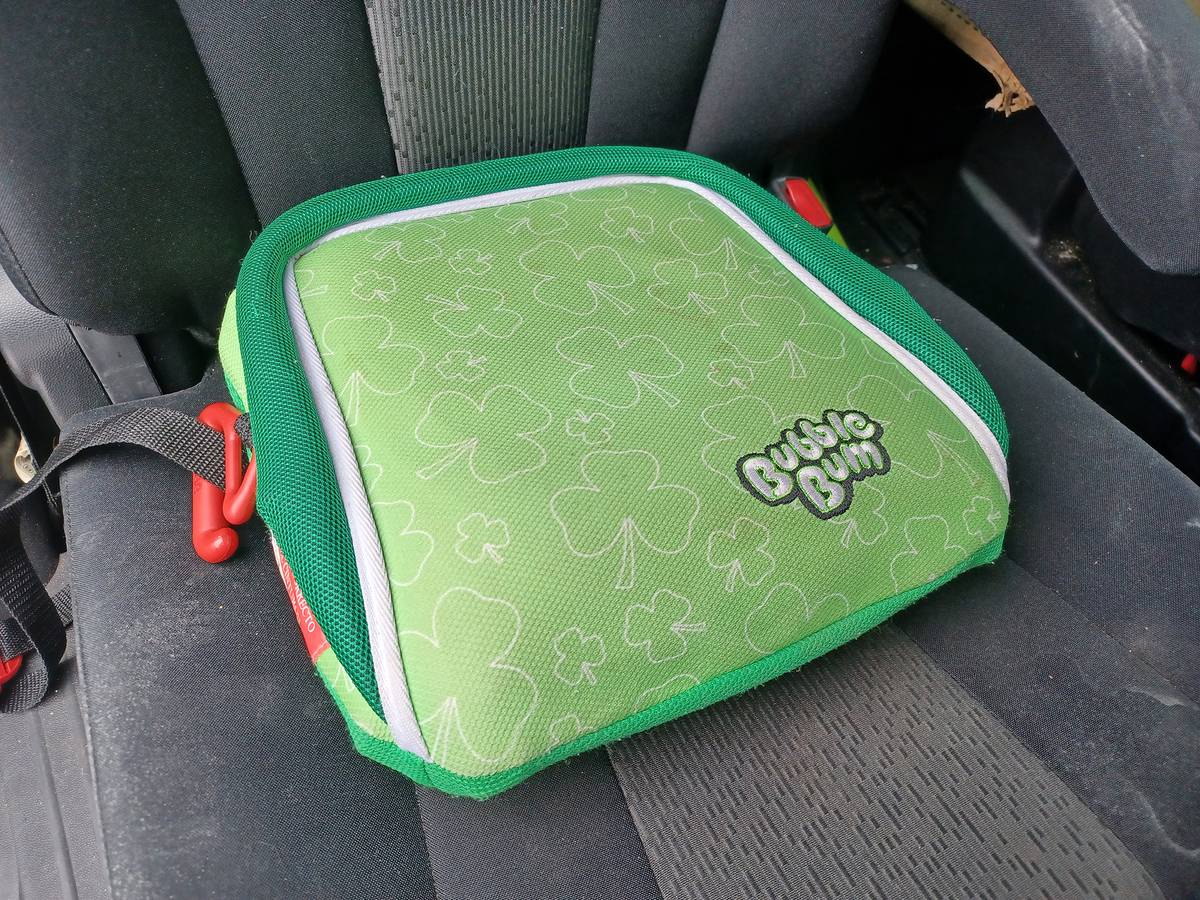Bubble Burst: IIHS Questions Safety of Inflatable Boosters


Traveling with young kids requires a lot of gear — and patience. Using an inflatable booster seat is one way to lighten the load, but new research from the Insurance Institute for Highway Safety questions if inflatable boosters are safe, specifically the BubbleBum and the Hiccapop UberBoost models.
Related: Check Out Cars.com’s Car Seat Checks
During the study, conducted jointly with the University of Virginia, researchers noticed that the dummy used in the test had a higher likelihood of sliding under the lap belt in a crash. The movement, called submarining, can cause abdominal or spinal injuries; IIHS said the risks of these types of injuries are why children should use boosters in the first place.
How Boosters Work
Seat belts are designed for adults, so boosters work by elevating the child to make the seat belt fit the body correctly. For a safe fit, the shoulder belt must lie snugly across the center of the child’s shoulder, not their face or neck. The lap belt must lie flat across the upper thighs, not the stomach.
Inflatable boosters work to correctly position a child, but they differ in that they’re lightweight, compact and must be inflated — like an inner tube — before use. That’s an advantage for parents who want to pack them on the go for, say, a vacation, but IIHS researchers zeroed in on the fact that inflatable boosters are less rigid than traditional boosters. Such inherently low stiffness played into their crash-test results.
Why the Results Changed
BubbleBum and the Hiccapop UberBoost inflatable boosters previously earned IIHS’ top safety rating for boosters, Best Bet. What changed?
The answer lies in research that came from a new type of test dummy. In previous tests, IIHS used a physical dummy meant to represent an average-sized 6-year-old in static belt-fit tests. The new test used an open-source computer model of a 6-year-old human body, which allowed researchers to get a more detailed look at how different characteristics around booster design and other variables affect the body in a crash.
“These two booster seats met our criteria for a Best Bet designation because they provide good belt fit when measured on a static dummy,” said Jessica Jermakian, IIHS vice president of vehicle research, in a statement. “However, our new research points to a greater risk that a child could slide under the lap belt when using a low-stiffness inflatable booster compared to a traditional one with a stiffer base.”
IIHS said that compared with static dummies, computer models can more readily account for a large variety of body types and positions, and that tests with this new model discovered that the interaction of the booster and child passenger is complicated.
Slouching has been shown as a factor that contributes to the risk of a child submarining, according to IIHS data. Researchers have determined that it’s important to evaluate how a booster influences posture. Softer, backless inflatable boosters make it more difficult to sit up straight, which impacts the seat’s ability to correctly position the belt on a child.
More From Cars.com:
- Taking Young Kids on a Trip? This Travel Car Seat Makes It Easier
- With Compact Mifold, Kids Will Never Be Without a Booster Seat
- Here’s What You’re Doing Wrong With Your Child’s Car Seat
- Find Your Next Car
What’s Next?
IIHS said additional research is needed to learn more about the safety level of inflatable boosters, and the agency is planning to invest more in this type of research while also continuing to conduct physical crash tests.
“We do plan to do more modeling to understand just how stiff a booster needs to be to function properly, but I can’t say yet what the timeline is on that project,” IIHS spokesman Joe Young told Cars.com.
Until more is known, another travel booster could fill the void: the Mifold. Where a traditional booster lifts the child so the seat belt properly fits them, the Mifold instead holds the belt down to their level, routing the lap belt over their hips and the shoulder belt across their chest. This booster is not without questions, however, as it has not yet been rated by IIHS. Young said the agency doesn’t have any plans to rate the Mifold.
Cars.com’s Editorial department is your source for automotive news and reviews. In line with Cars.com’s long-standing ethics policy, editors and reviewers don’t accept gifts or free trips from automakers. The Editorial department is independent of Cars.com’s advertising, sales and sponsored content departments.

News Editor Jennifer Geiger joined the automotive industry in 2003, much to the delight of her Corvette-obsessed dad. Jennifer is an expert reviewer, certified car-seat technician and mom of three. She wears a lot of hats — many of them while driving a minivan.
Featured stories




